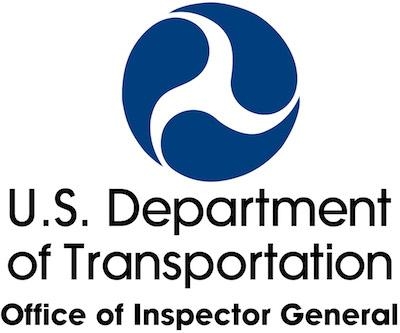Tue, Mar 13, 2018
Requested By The Chairman And Ranking Member Of The House Committee Transportation And Infrastructure And Its Aviation Subcommittee
The DOT Office of Inspector General has released a report critical of the FAA's management controls over the use and oversight of NextGen developmental funding.

According to the OIG report, since fiscal year 2008, Congress has appropriated over $7 billion for the FAA's Next Generation Air Transportation System (NextGen) to meet FAA’s goals of modernizing the National Airspace System. This includes over $1.7 billion for NextGen developmental projects. FAA manages these projects through the project level agreements (PLAs)—an internal control mechanism for documenting the agreed-upon work and managing project execution. The House Committee on Appropriations directed our office to examine how these investments are managed and what outcomes have been achieved to improve the Nation’s air transportation system. Accordingly, the audit objectives were to assess FAA’s procedures for (1) selecting and justifying projects that received developmental funding and (2) overseeing the execution and measuring the outcomes of projects. The FAA’s overall oversight framework for these areas were also reviewed.
The OIG found that the FAA’s annual budget process provides broad controls for selecting and justifying developmental projects, but the Agency has lacked effective management controls in its PLA process. For example, 12 of the 22 PLAs we sampled did not align with FAA’s high-priority NextGen investment decisions, primarily because they were for support or implementation work. Furthermore, a lengthy PLA approval process led to FAA often funding projects without approved PLAs and contributed to difficulty obligating funds to developmental projects. FAA had not defined which types of projects are eligible for developmental work and lacked standard operating procedures for PLAs until 2016, 8 years after beginning to use PLAs. FAA’s Office of NextGen also had not effectively executed and measured the outcomes of NextGen developmental projects, including tracking expenditures by PLA and obtaining deliverables for PLA projects. Finally, FAA has lacked a clearly established framework for
managing the overall oversight of developmental projects and addressing persistent problems.
Six recommendations to improve FAA’s management and oversight of NextGen developmental funding were made by the OIG. FAA concurred with two, partially concurred with one, and non-concurred with three recommendations, according to the report. The OIG is requesting that FAA reconsider its responses for these three recommendations.
(Source: OIG report)
More News
Circle To Runway (Runway Number) Used by ATC to inform the pilot that he/she must circle to land because the runway in use is other than the runway aligned with the instrument appr>[...]
Aero Linx: National Aviation Safety Foundation (NASF) The National Aviation Safety Foundation is a support group whose objective is to enhance aviation safety through educational p>[...]
At Altitude Of About 250-300 Ft Agl, The Airplane Experienced A Total Loss Of Engine Power On November 6, 2024, at 1600 central standard time, a De Havilland DHC-1, N420TD, was inv>[...]
From 2009 (YouTube Edition): Three Hour Flight Was 'Flawless' -- At Least, Until Mother Nature Intervened For anyone who loves the aviation business, this was a VERY good day. Afte>[...]
Also: AMA Names Tyler Dobbs, More Falcon 9 Ops, Firefly Launch Unsuccessful, Autonomous F-16s The Air Force has begun ground testing a future uncrewed jet design in a milestone tow>[...]
 ANN's Daily Aero-Term (05.05.25): Circle To Runway (Runway Number)
ANN's Daily Aero-Term (05.05.25): Circle To Runway (Runway Number) ANN's Daily Aero-Linx (05.05.25)
ANN's Daily Aero-Linx (05.05.25) NTSB Prelim: De Havilland DHC-1
NTSB Prelim: De Havilland DHC-1 Classic Aero-TV: The Boeing Dreamliner -- Historic First Flight Coverage
Classic Aero-TV: The Boeing Dreamliner -- Historic First Flight Coverage Airborne-NextGen 05.06.25: AF Uncrewed Fighters, Drones v Planes, Joby Crew Test
Airborne-NextGen 05.06.25: AF Uncrewed Fighters, Drones v Planes, Joby Crew Test



